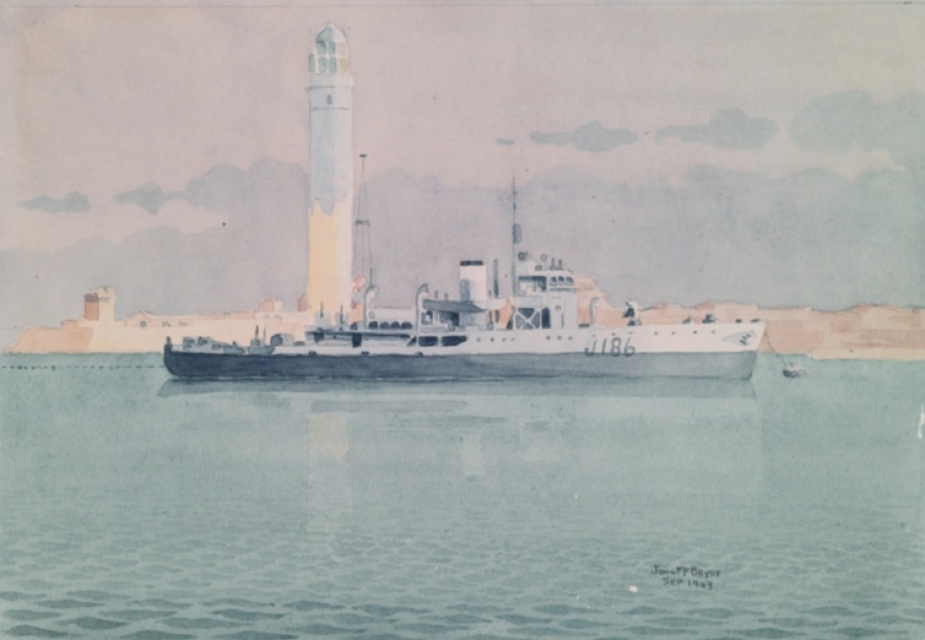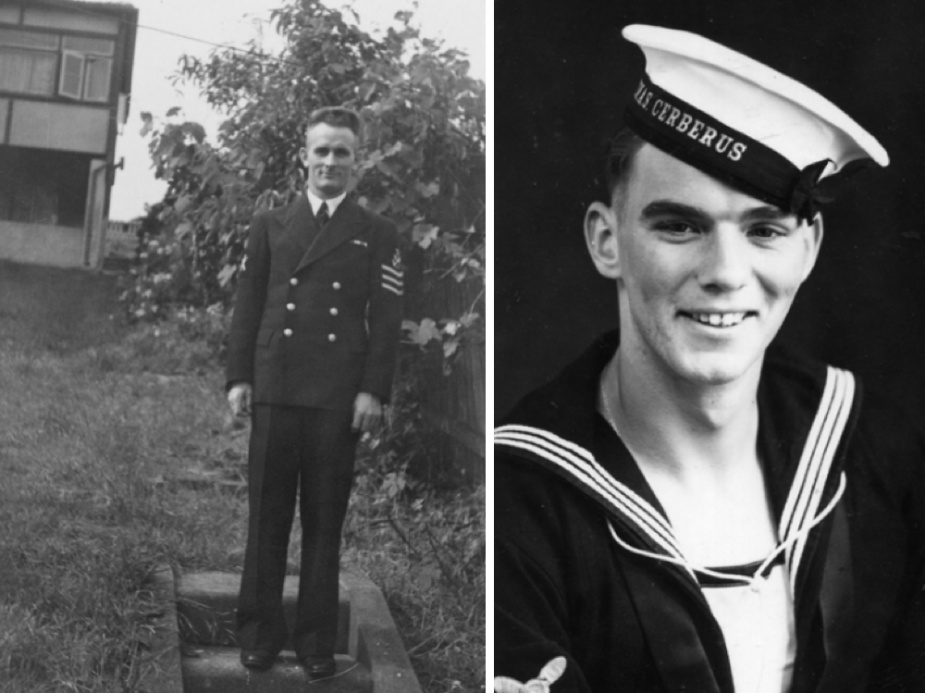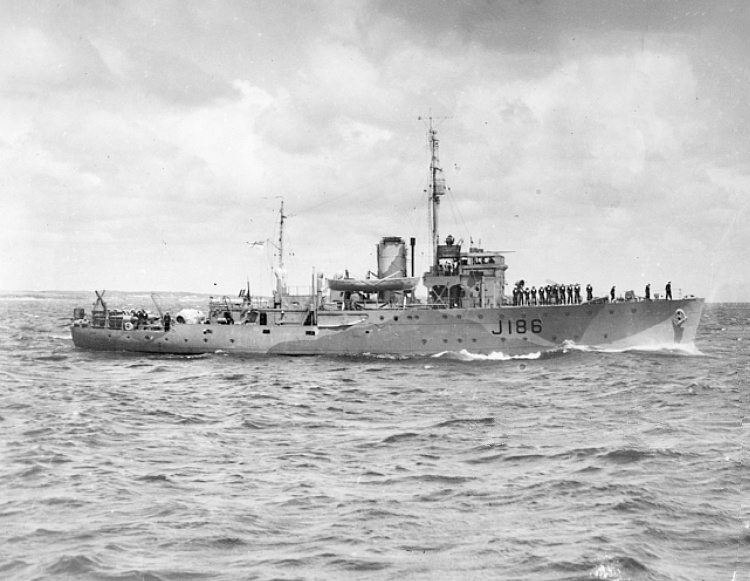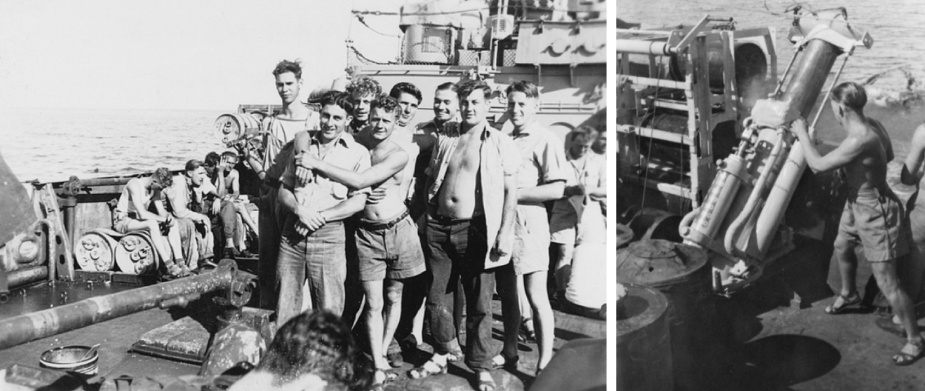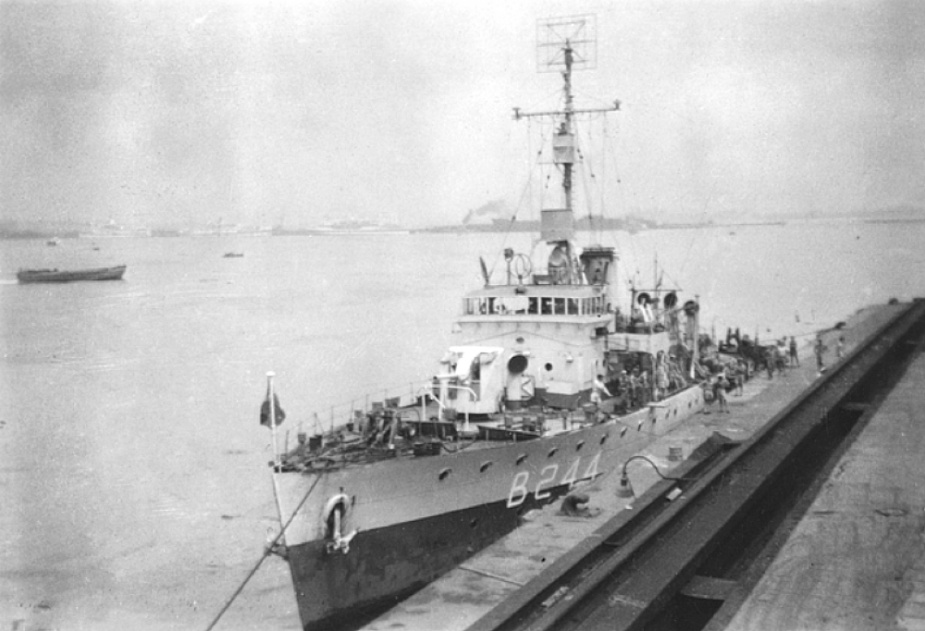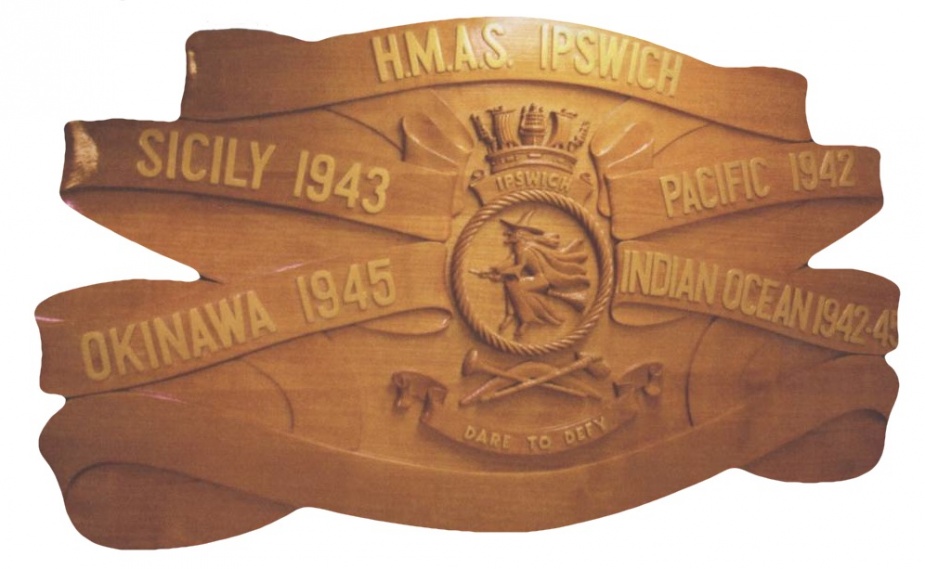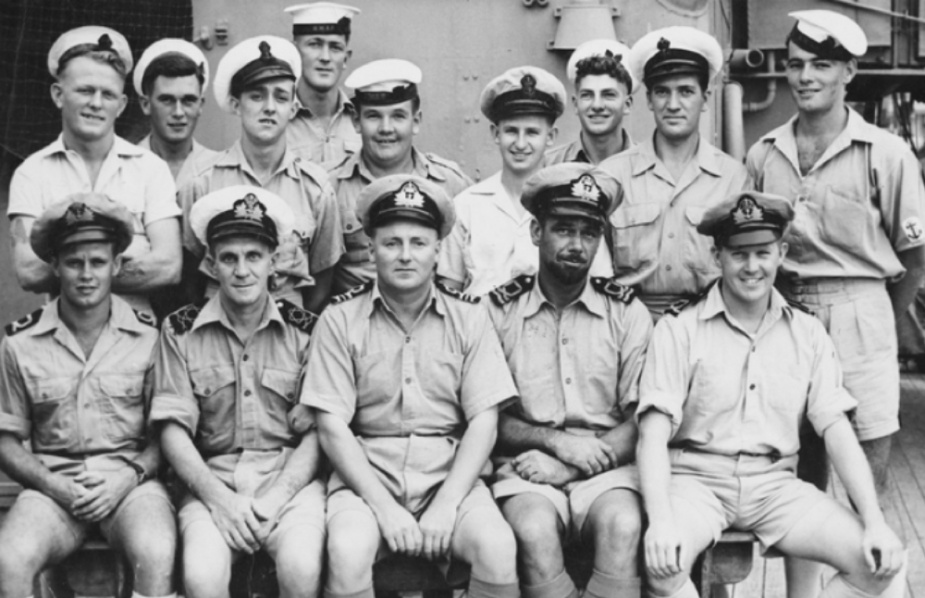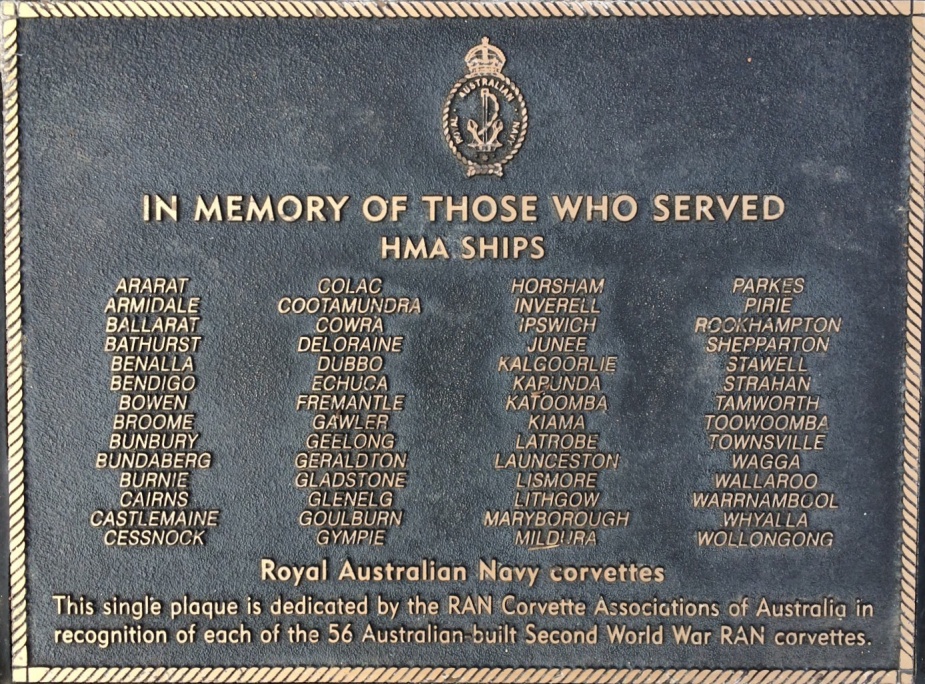
HMAS Ipswich was one of sixty Australian Minesweepers (commonly known as corvettes) built during World War II in Australian shipyards as part of the Commonwealth Government"s wartime shipbuilding programme. Twenty (including Ipswich) were built on Admiralty order but manned and commissioned by the Royal Australian Navy. Thirty six were built for the Royal Australian Navy and four for the Royal Indian Navy.
HMAS Ipswich was laid down at Evans Deakin & Co Ltd, Brisbane, Queensland on 26 March 1941. She was launched on 11 August 1941 by Mrs Foll, wife of the Minister for the Interior and was the first RAN warship to carry the name of the inland city, located south west of Brisbane, Queensland.
Ipswich commissioned at Brisbane on 13 June 1942 under the command of Lieutenant Commander John S McBryde RANR(S).
After commissioning Ipswich was employed on escort duty on the Australian coast until October 1942. On 3 November 1942 she left Fremantle under orders to join the Eastern Fleet, based at Kilindini. For the next six months she was almost constantly at sea on escort and anti-submarine patrol duty in the western Indian Ocean and between the Persian Gulf and India.

In May 1943 she was transferred to the Mediterranean for service as a unit of the 21st Minesweeping Flotilla. In the Mediterranean she took part in the Sicily campaign and on escort and patrol duty she steamed over a wide area of the Mediterranean visiting, among other places, Oran, Haifa, Alexandria, Tobruk, Benghazi, Bizerta, Tripoli, Algiers, Malta, Gibraltar and the Dodecanese.
At Syracuse on 25 July 1943, Ipswich was credited with shooting down a twin engined bomber. The following month she proceeded to the Atlantic to form part of the escort of an Alexandria bound convoy and despite numerous air attacks in the Mediterranean the ship escaped damage.
On 29 October 1943 Ipswich departed Port Said to rejoin the Eastern Fleet and resume Indian Ocean escort duty. At the end of the year she had steamed 61,360 miles in eighteen months of service. On 11 February 1944, aided by her sister ship HMAS Launceston and the Indian sloop HMIS Jumna, she destroyed the Japanese submarine RO-110 off the east coast of India. The following month Ipswich herself barely escaped destruction when narrowly missed by a torpedo. At the time she formed part of the escort of a large Colombo bound troop convoy.
Ipswich continued serving in the Indian Ocean operating mainly between Ceylon and India until July 1944, when she proceeded to Australia for refit. In November 1944, following a brief period of service based on Fremantle, she returned to Colombo and began her third period of duty as an Eastern Fleet escort vessel.
On 21 January 1945 her Indian Ocean service finally ended when she commenced her return passage to Australia. There, as a unit of the 22nd Minesweeping Flotilla, she joined the British Pacific Fleet and until the end of hostilities was on constant escort duty in the New Guinea area and to the Philippines. At the end of August 1945 Ipswich arrived in Tokyo Bay in preparation for the Japanese surrender ceremony on 2 September on board USS Missouri.
Following a period of surveillance duty in New Guinea, Ipswich returned to Australia, arriving at Brisbane on 15 February 1946. On 4 June 1946 she departed for Ceylon where she was to be handed over to the Royal Netherlands Navy. On 5 July 1946, at Colombo, Ipswich paid off and was transferred to the Royal Netherlands Navy, to be renamed Morotai. During her RAN commission Ipswich had steamed some 143,000 miles.
In 1949 the ship was transferred by the Royal Netherlands Navy to the Indonesian Navy and renamed Hang Tuah. In April 1958 she was bombed and sunk by an aircraft operated by forces in rebellion against the Indonesian Government.
Note: This video is hosted on YouTube. Department of Defence users will not be able to view this video on the Defence Protected Network.
This cine film has been placed online as part of the Sea Power Centre - Australia"s ongoing archival digitisation program.
Further reading
- "In all respects...Part of the service life of HMAS Ipswich" by Brian A Fernandez - published by Mary Fernandez, 1988.
- "A History of HMAS Ipswich" by Alan R Grimmer - published by HMAS Ipswich Association, Australia, 1993.
- "The Corvettes: Forgotten Ships of the Royal Australian Navy" by Iris Nesdale - published by the author, October, 1982.
- "Corvettes - Little Ships for Big Men" by Frank B Walker - published by Kingfisher Press, NSW, 1996.
- "The Australian Centenary History of Defence Volume III, The Royal Australian Navy" edited by David Stevens, Oxford University Press, South Melbourne, Victoria, Australia, 2001.
Specifications
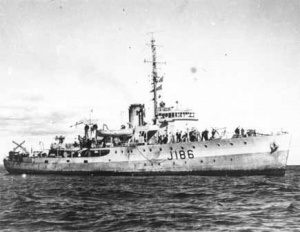 |
| Class |
Bathurst Class |
|---|---|
| Type |
Australian Minesweeper |
| Pennant |
J186 |
| Builder |
Evans Deakin & Co Ltd, Brisbane |
| Laid Down |
6 March 1941 |
| Launched |
11 August 1941 |
| Launched by |
Mrs Foll, wife of the Minister for the Interior |
| Commissioned |
13 June 1942 |
| Decommissioned |
5 July 1946 |
| Dimensions & Displacement | |
| Displacement | 650 tons |
| Length | 186 feet |
| Beam | 31 feet |
| Draught | 8 feet 6 inches |
| Performance | |
| Speed | 15 knots |
| Complement | |
| Crew | 85 |
| Propulsion | |
| Machinery | Triple expansion, 2 shafts |
| Horsepower | 2000 |
| Armament | |
| Guns |
|
| Other Armament |
|
| Awards | |
| Battle Honours |
|
